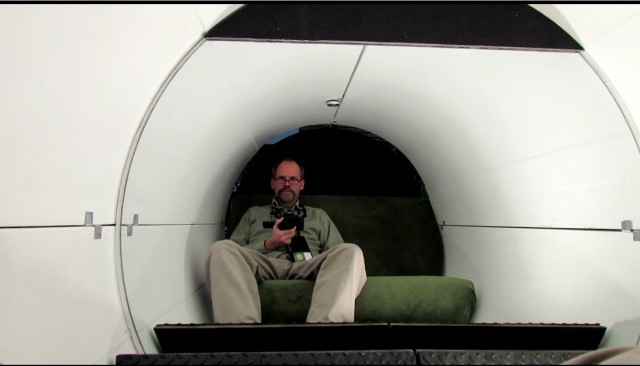
When Daryl Oster was a young boy living on his family’s farm outside of Greeley, he used to go with his father to the salvage yard to pick up supplies. That’s where he became acquainted with pneumatic tubes — like the contraptions banks used to suck your deposit from your car to the teller’s desk. He looked at them and thought, “What would it be like to be inside that thing?”
Now, decades later, he’s still asking that question. Only his answer is almost within reach.
Oster, who lives in Longmont, is founder and CEO of Evacuated Tube Transport Technologies Inc., ET3 for short. His vision is to create a highwaylike system of tubes in which people can travel at speeds of up to 4,000 mph. At that rate, a passenger could leave home in New York City and arrive in Beijing two hours later. With his background in mechanical engineering, Oster based his design concept in part on those pneumatic tubes. The company made headlines recently because of multimillionaire Elon Musk’s announcement to launch a high-speed Hyperloop, also based on the pneumatic tube.
“We are taking space-travel conditions down to Earth,” Oster explained during the recent Ideacity conference in Toronto. (Go to www.ideacityonline.com/talks/daryl-oster-talk to watch his presentation.)
The idea seems fairly simple: Create vacuum tubes in which car-sized pods, which could accommodate up to six people or several pallets of cargo, can travel. Placing the pods in a vacuum eliminates friction, allowing them to move faster while using less energy. The pods would actually levitate above the “track” and be propelled via a complex system of magnets.
Oster’s model for ET3 is “open-consortium.” He sells licenses to the tech — starting at $100 for individuals — and the idea is that licensees contribute to the project while holding a stake in its outcome. So far, ET3 has more than 250 licensees, Oster says.
Perhaps the biggest obstacle Oster faces right now, what’s keeping ET3 from exploding onto the market, is the fact that the technology has never been tested. That was one of the main reasons ET3 wasn’t chosen to be part of the Interstate 70 Mountain Corridor project now under way, according to David Krutsinger, transit and rail program manager for the Colorado Department of Transportation.
“They didn’t have a working model, and they had an unclear process for receiving safety certification,” Krutsinger says. He adds that there were other unanswered questions regarding the technology, including where the pods would “park” and the true price tag for turning Oster’s dream into a reality.
For now, Oster has set his sights on California, where he says he is pursuing opportunities to create a usable prototype. He’s optimistic because much of the groundwork needed to begin work on his project has already been laid via studies into high-speed rail in that state.
“Why fight the system when there are places that want us and are giving us the right of way that we need?” Oster says by phone from Los Angeles. He doesn’t elaborate on exactly where the prototype might be located, but he suggests that it could lie somewhere along the route from Los Angeles to San Francisco.
“I look back 10 years at the type of mobile phone I carried. It was very large and had barely any of the features they have today,” Krutsinger says. “In another 10 years, once it’s been tested out and proven more, I don’t see why this [ET3] couldn’t come online.”
Respond: [email protected]














